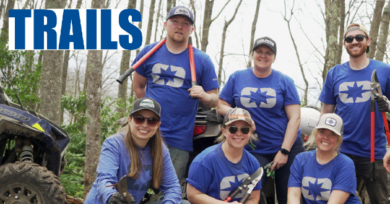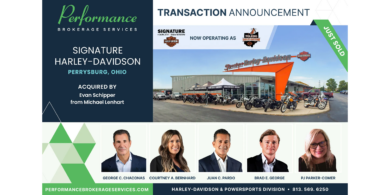OPINION – Finding the right marketing approach
They’re not exactly 20 Groups, but they certainly can be helpful.
They outline the problems and fears dealers have. They give advice on everything from customer service strategies to marketing, and a bit of history. They reflect current hot sellers and nonsellers. And perhaps most importantly, they give you a sense of what’s working in our industry.
These insightful pieces are called Power Profiles, and we feature several of these dealer profiles in each issue of Powersports Business. These features reflect the nation’s diverse dealerships — we try to hit at least two to three U.S. regions in each issue — but also potential trends.
Consider one of the dealer profiles from the March 13 edition. Jim Custer, owner of Flagstaff Motorsports in Flagstaff, Ariz., has a unique approach to advertising: He doesn’t do it, at least not in the traditional sense.
To get an idea of how unique this is, you have to understand Custer. He’s a businessman first and an enthusiast second. Custer developed his business acumen in grocery stores, spending more than 20 years in an industry that heavily advertises in the traditional sense.
And Custer brought that business practice over with him in 2000 when he joined the dealership. He spent two or three months heavily advertising in print and on radio telling his consumers and Flagstaff business VIPs of the change in ownership. But since then, there has been almost no advertising in the traditional sense.
Even in July, after he moved into a new store and remodeled his old store, Custer did not do a “lick of advertising.”
Instead, he has spent his advertising budget for the past two years on other marketing approaches: sponsoring area youth sports teams and participating in giveaways, including one recently for the Flagstaff area blood bank.
These approaches at brand marketing are not new or revolutionary. Many dealerships participate in such marketing practices to a certain extent. But relying so heavily on these types of marketing and so little on promoting the product is certainly different.
Most dealers use co-op money provided by OEMs to advertise their vehicles and accessories. In fact, Suzuki officials said dealers currently use about 70 percent of the co-op money that’s available to them.
Still, Custer’s approach seems to be working: His sales are increasing enough to where he has added six employees and moved into a larger dealership.
But will his approach work for your dealership?
It depends on your situation.
Hal Ethington, an industry veteran and a Powersports Business columnist, recalls how a marketing tactic worked for a Jiffy Lube that he partly owned. The business flooded cable TV with ads until several customers reported being sick of seeing the commercials. So the company started doing community service events, including aiding an area cemetery that had been devastated by a fire. The company offered to donate all of its revenue from one day of business to the local cemetery group. The community reaction was outstanding.
But will spearheading community events and sponsorships be enough? If you’re just starting out or haven’t created enough brand awareness, probably not.
Sponsorships can be a cost-effective way to reach a lot of people. They also lend more of a human touch to your dealership and remind consumers of your dedication to the community. What they don’t do as well is tell consumers what great benefit there is to shopping at your store.
The other potential downside of sponsorship is the difficulty in measuring its success.
Of course, measuring any kind of advertising success isn’t easy. As Ethington, who has owned four dealerships in two states, says about one advertising golden rule, “You know 50 percent of it works. You just don’t know which 50 percent.”
And that’s one thing that really got to Custer: He was spending a bunch of money on traditional advertising and had no idea how successful it was.
He’s not alone in that feeling. But there are ways to gauge how well an advertisement works. Here’s a couple of ideas on how to build a measurable response into your advertising courtesy of Ethington and his son Justin, the owner of a marketing consultant company in Salt Lake City:
The common theme in these measuring devices is extra time, and potentially cost, on your part. But don’t dismiss these practices because of that. OEM representatives rightfully point out that putting extra work in advertising can lead to extra revenue.
Of course, don’t forget Custer’s approach either. A dealer who can market successfully in a town where his biggest competitor is just four miles away has to be on to something.
If you would like your dealership to be considered for a Power Profile, contact me at npascale@ehlertpublishing.com.




